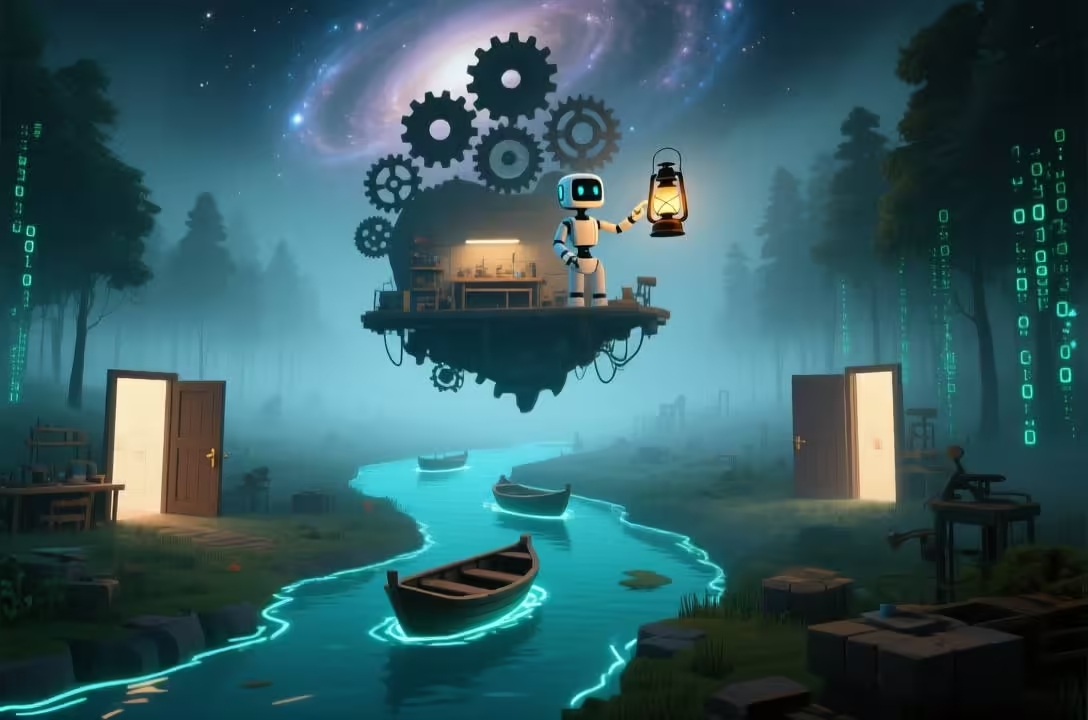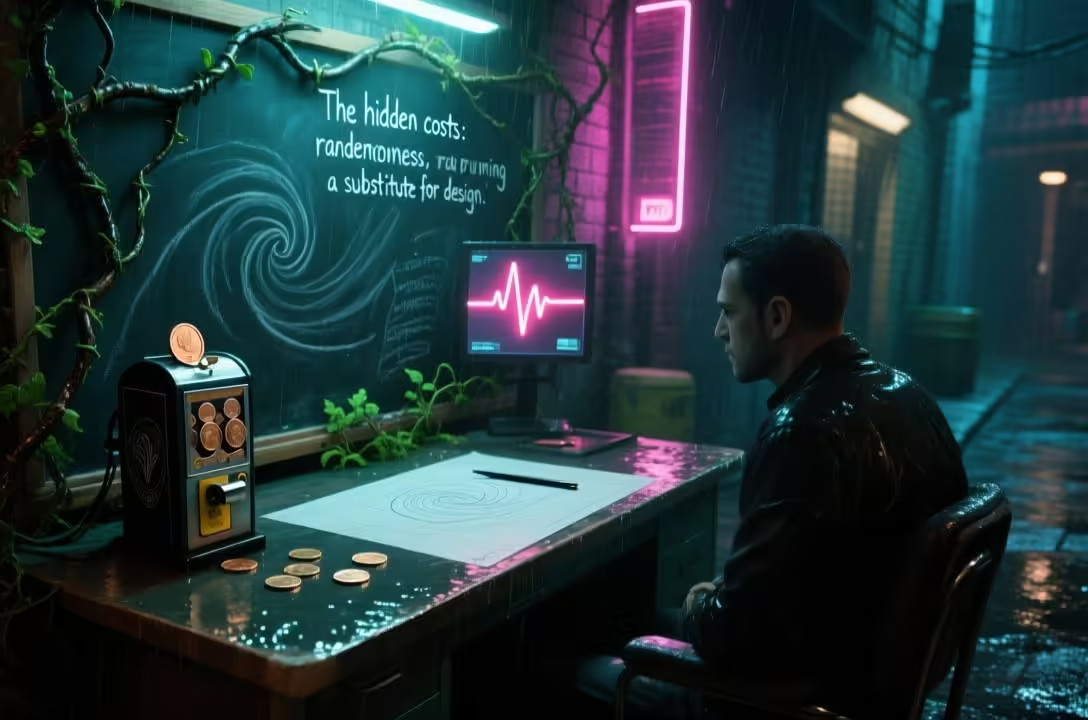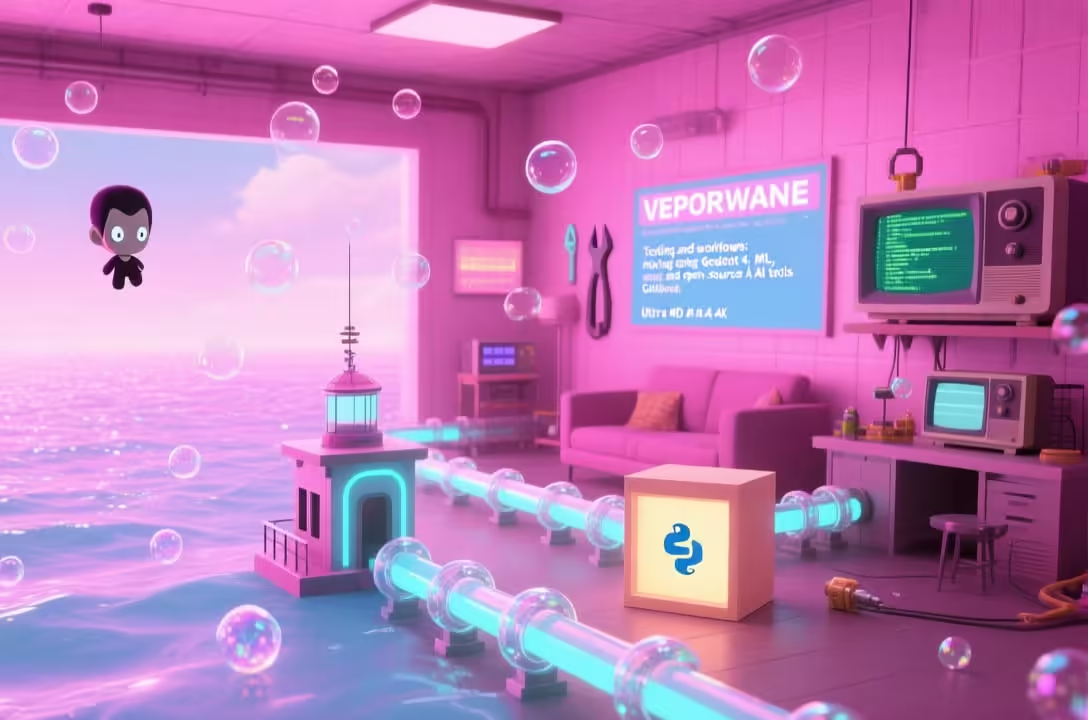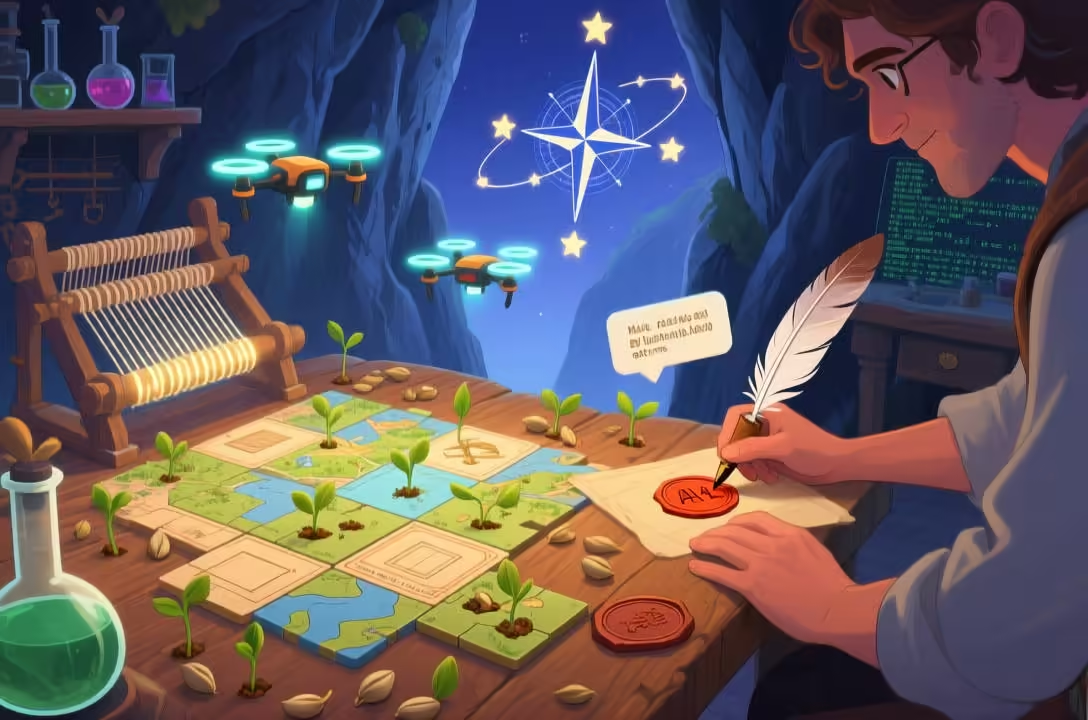4. Why procedural generation with Godot feels different — flexibility meets responsibility
Godot’s open-source nature and lightweight editor change the calculus for procedural content. You’re not fighting a closed toolchain; you can script level generation directly in GDScript, hook in Python-based ML tooling, or drop-in C# modules if that’s your comfort zone.
That means faster experimentation, but it also means more responsibility: the engine won’t guard you from design debt. Procedural generation in Godot shines for rapid prototyping and iterating gameplay loops, especially for indie game development where time and budget are tight.
The key is treating AI as an assistant that accelerates design rather than a magic wand that replaces it ( (Source)

3. The hidden costs: randomness isn’t a substitute for design
Throwing algorithms at level layout or loot tables can produce variety, but variety alone doesn’t equate to fun. Procedural content often needs layered constraints — pacing rules, deliberate choke points, and emergent narrative hooks — to feel curated.
AI can generate tens of thousands of permutations overnight, but testing those permutations becomes a chore. Developers must invest in automation: unit tests for generation scripts, playtest telemetry, and seeded reproducibility so you can iterate on a bad run and fix it.
Treat procedural systems like living systems: they need monitoring, tuning, and occasional surgical edits to avoid chaotic player experiences ( (Source)

2. Tooling and workflows: mixing Godot 4, ML, and open-source AI tools
Integrating machine learning or generative tools with Godot is more practical now than it was a few years ago. Godot 4’s improvements to rendering and scripting reduce friction when streaming assets or generating terrains at runtime.
The workflow often looks like this: prototype generator logic in Godot, offload heavy-level suggestions to a local Python ML model or an open-source tool, then import curated outputs back into the scene. Beware physics and collider mismatches when importing procedurally placed geometry; lessons from Unity’s terrain and collider quirks apply here too — colliders can become performance landmines if not batched or simplified ( ( (Source)

1. Making procedurally generated content feel curated — practical rules and human-in-the-loop patterns
The trick to making procedurally generated worlds feel handcrafted is predictable randomness. Seed systems let designers reproduce and refine specific maps.
Constraint layers — think room templates, narrative anchors, and difficulty bands — give AI outputs a human rhythm. Human-in-the-loop workflows are essential: use AI to propose designs, but keep tooling that lets designers accept, tweak, or reject suggestions with minimal friction.
Telemetry and simple A/B experiments can show which procedural choices improve retention or player satisfaction. For indie studios, this hybrid approach scales: hobbyists can polish a single loop; small teams can iterate toward a shipped product without burning time on handcrafted megasets (Conclusion — little experiments, big payoffs 🚀 Procedural content generation in Godot, paired with AI tooling, isn’t a shortcut — it’s a multiplier.
Used wisely, it accelerates prototyping, unlocks scalable workflows, and lets designers explore more gameplay iterations than ever before. Start small, measure often, and keep the designer’s eye at the center of the loop.
The tooling will keep improving; the craft of making something that feels intentional? That will always be human work.
( (Source)

